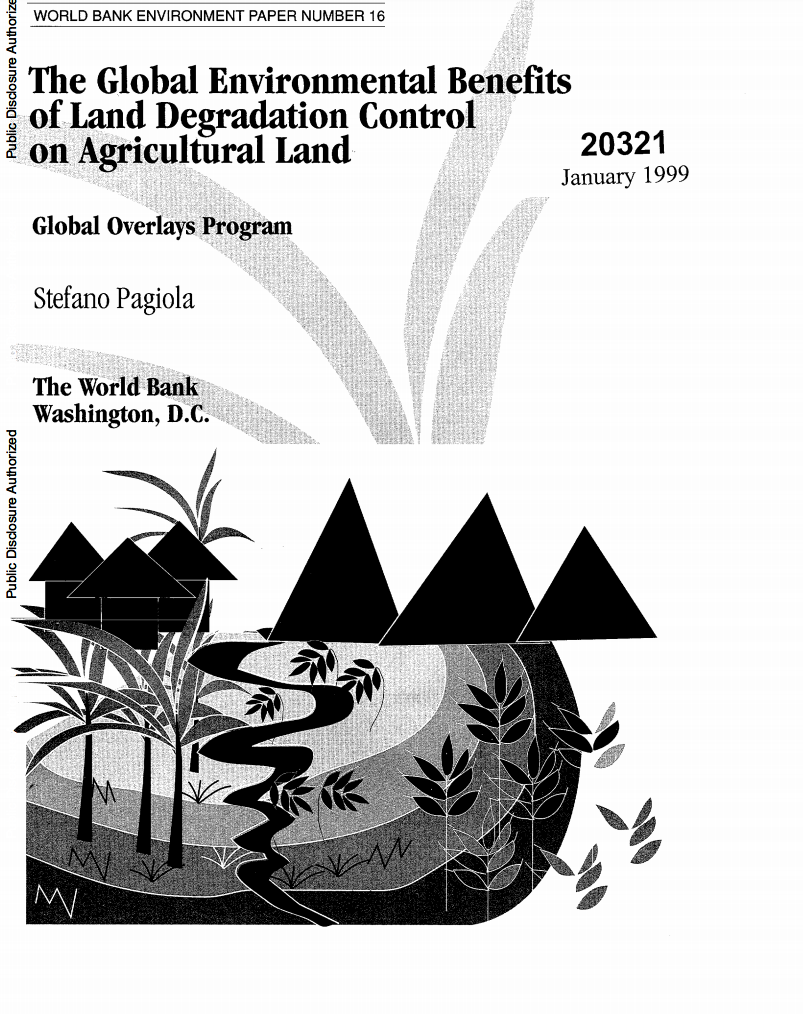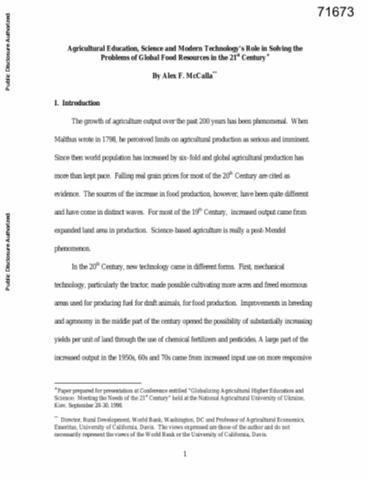The World Bank is a vital source of financial and technical assistance to developing countries around the world. We are not a bank in the ordinary sense but a unique partnership to reduce poverty and support development. The World Bank Group has two ambitious goals: End extreme poverty within a generation and boost shared prosperity.
- To end extreme poverty, the Bank's goal is to decrease the percentage of people living on less than $1.25 a day to no more than 3% by 2030.
- To promote shared prosperity, the goal is to promote income growth of the bottom 40% of the population in each country.
The World Bank Group comprises five institutions managed by their member countries.
The World Bank Group and Land: Working to protect the rights of existing land users and to help secure benefits for smallholder farmers
The World Bank (IBRD and IDA) interacts primarily with governments to increase agricultural productivity, strengthen land tenure policies and improve land governance. More than 90% of the World Bank’s agriculture portfolio focuses on the productivity and access to markets by small holder farmers. Ten percent of our projects focus on the governance of land tenure.
Similarly, investments by the International Finance Corporation (IFC), the World Bank Group’s private sector arm, including those in larger scale enterprises, overwhelmingly support smallholder farmers through improved access to finance, inputs and markets, and as direct suppliers. IFC invests in environmentally and socially sustainable private enterprises in all parts of the value chain (inputs such as irrigation and fertilizers, primary production, processing, transport and storage, traders, and risk management facilities including weather/crop insurance, warehouse financing, etc
For more information, visit the World Bank Group and land and food security (https://www.worldbank.org/en/topic/agriculture/brief/land-and-food-security1
Resources
Displaying 4851 - 4855 of 4907What Drives Deforestation in the Brazilian Amazon? Evidence from Satellite and Socioeconomic Data
Road network expansion is strongly associated with increased deforestation in the Brazilian Amazon. Pfaff analyzes the determinants of deforestation in the Brazilian Amazon. Using a model of optimal land use, he derives and estimates an equation for deforestation using (1) country level data for 197888 and (2) measures of deforestation from satellite images.The evidence suggests that: Increased road density in a county leads to more deforestation there and in neighboring counties. Development projects were associated with deforestation in the 1970s but not in the 1980s.
The Emerging Legal Framework for Private Sector Development in Viet Nam's Transitional Economy
Private (especially foreign) investors find Viet Nam's legal framework the most serious impediment to investment. Policy changes to reverse the former command system may be enough to initiate the transition. But without an appropriate legal framework, they will be insufficient for long-term development.A major objective of Viet Nam's transition to a market economy has been to reactivate the private sector in a mixed economy.
The global environmental benefits of land degradation control on agricultural land - global overlays program
The note focuses on the global effects of land degradation, but emphasizes other important levels of land degradation: at the field level, it may result in reduced productivity; at the national level, it may cause flooding, and sedimentation; and, at the global level, it can contribute to climate changes, damaging bio-diversity, and international waters. The effects on climate changes are explored, and the report questions the extent to which land degradation on agricultural land, affects climate change. Does it increase emissions of greenhouse gases?
Agricultural Education, Science and Modern Technology's Role in Solving the Problems of Global Food Resources in the 21st Century
The growth of agriculture output over the past 200 years has been phenomenal. When Malthus wrote in 1798, he perceived limits on agricultural production as serious and imminent. Since then world population has increased by six-fold and global agricultural production has more than kept pace. Falling real grain prices for most of the 20th Century are cited as evidence. The sources of the increase in food production, however, have been quite different and have come in distinct waves. For most of the 19th century, increased output came from expanded land area in production.
Monitoring land quality : assuring more sustainable agricultural production systems
Identification of Land Quality Indicators (LQIs) is a key requirement of sustainable land management. They are required to assess, monitor, and evaluate changes in the quality of land resources and environmental impacts. The Land Quality Indicator (LQI) program monitors the environment and the sector performance of managed ecosystems. The program is being developed on a national and regional scale, but it is also part of a larger global effort to improve natural resource management. The LQI program recommends addressing issues of land management by agroecological zones.









